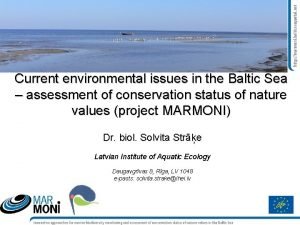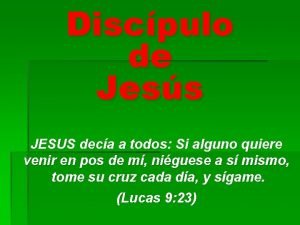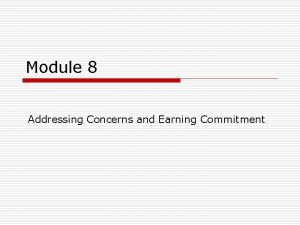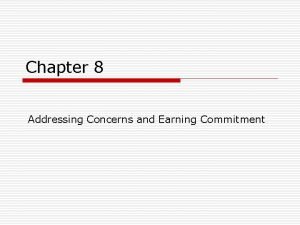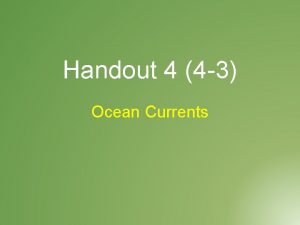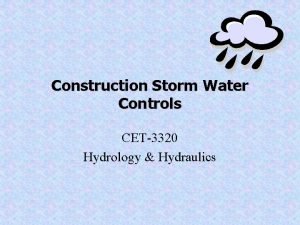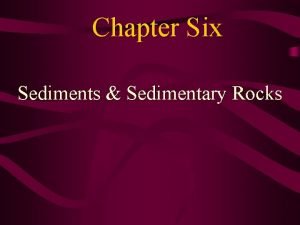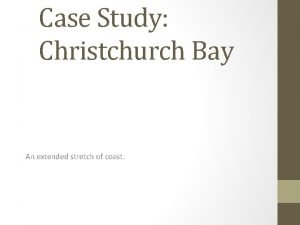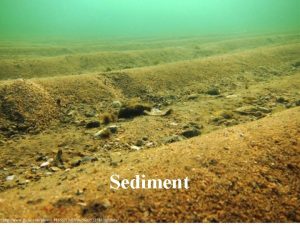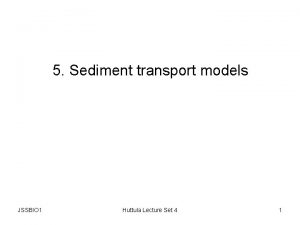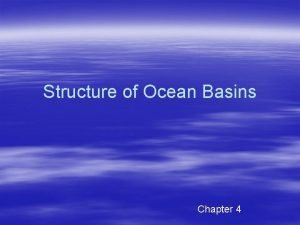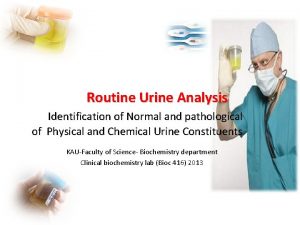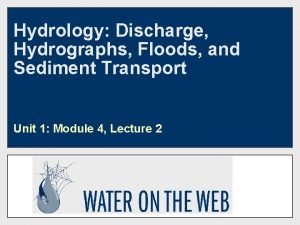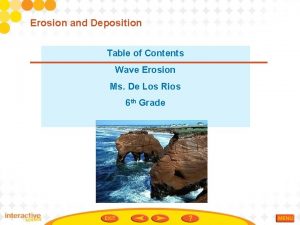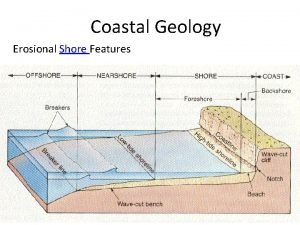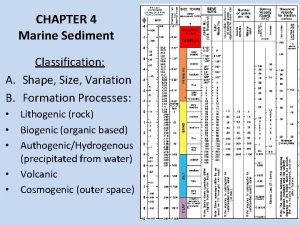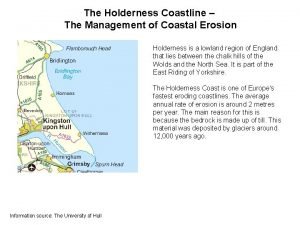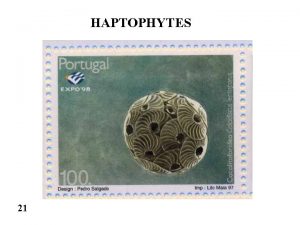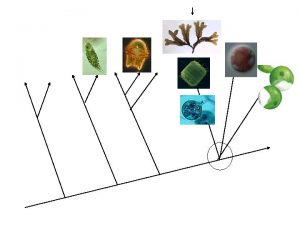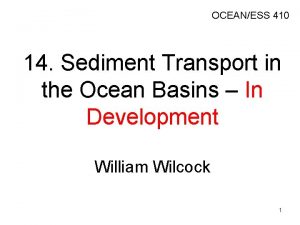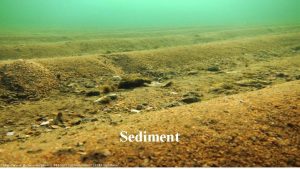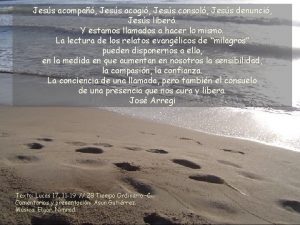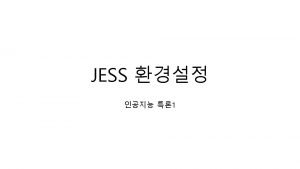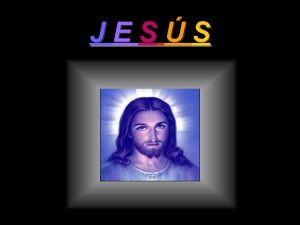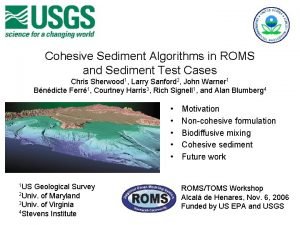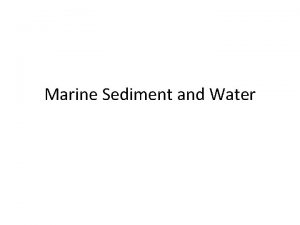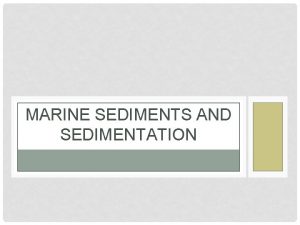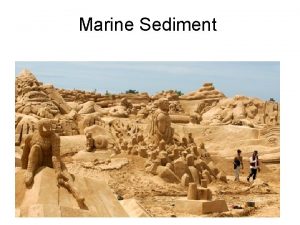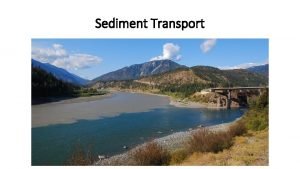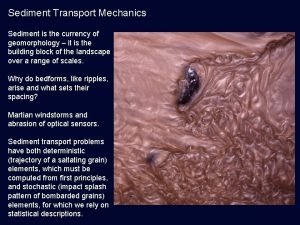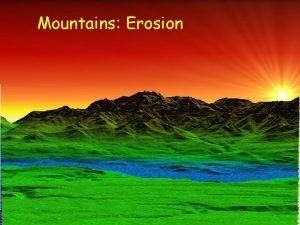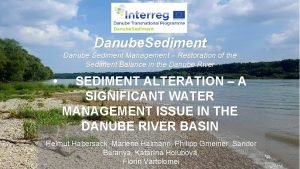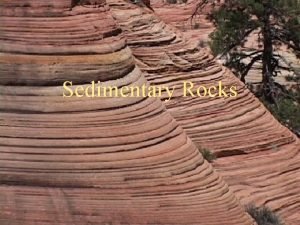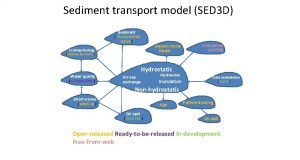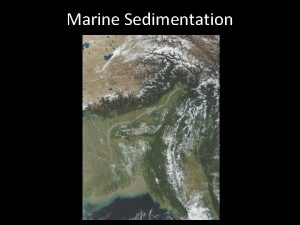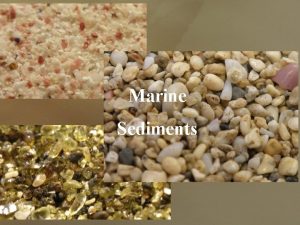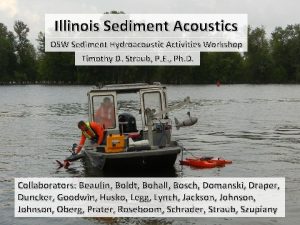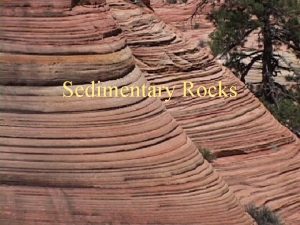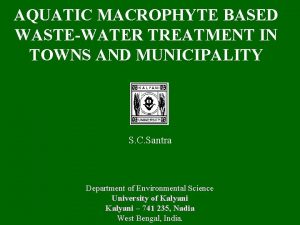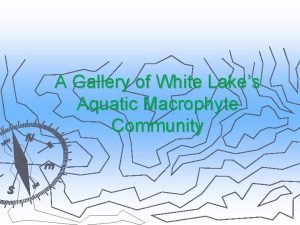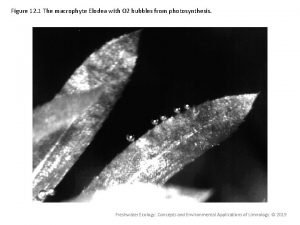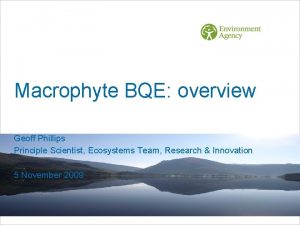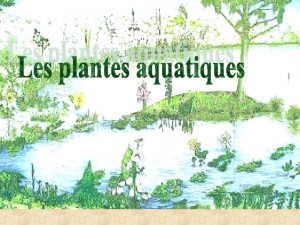Assessment of Macrophyte and Sediment Concerns Jess Hesley


























- Slides: 26

Assessment of Macrophyte and Sediment Concerns Jess Hesley, Tyler Jack, Christina Leid University of Idaho Limnology Service Learning Project December 7 th, 2011

Outline § Background § Methods • Sampling • Analysis § Results § Recommendations

The OX Ranch near Council, ID Photo Credit: Frank Wilhelm

Sampling Methods: Macrophytes • Site Selection • Collection

Sampling Methods: Sediment • Site Selection • Collection

Analysis Methods: Macrophytes • Preparation • Drying

Analysis Methods: Sediment • Preparation • Drying

Results �Macrophytes § Species ID § Biomass �Sediment § Water Content § Deposition

Vegetative Culprits • Ceratophyllum demersum Coontail • Ceratophyllum echinatum Spiny Hornwort • Myriophyllum spp. Milfoil

Biomass Determination 0. 7 Biomass (kg/m 2) 0. 6 Macrophyte Biomass 0. 5 0. 4 0. 3 0. 2 0. 1 0 A B Polygon C

Water Contents 0 0 20 Water Content (%) 40 60 80 100 2 Depth (cm) 4 6 8 10 12 14 16 18 Core A Core B Core C

Sediment Deposition Pond Wide Total: ~787 m 3 Annual: ~44 m 3 By Polygon A: 107 m 3 B: 462 m 3 C: 215 m 3 Photo Credit: Frank Wilhelm

Deposition by Polygon 500 450 Total Sediment (m 3) 400 350 300 250 200 Deposition 150 100 50 0 A B Polygon C

Review of Concerns �Macrophytes �Biomass �Invasive nature �Sediment �Deposition �Altering pond structure

Recommendations Control Method Use at OX Ranch Extended Drawdown Recommended to allow for dredging. Dredge Recommended down to a depth of 3 m in center of pond, removing 5 400 m³ of sediment and 4 600 kg of dried macrophytes. Benthic Barriers Recommended in areas with significant re-growth. Application of 190 m² of 8 mm perforated black plastic covered with 10 y³ of pea sized gravel. 04 m thick. Hand Pulling Recommended in select areas.

Determining factors for - Dredging Positive Impacts: § Reduction of suitable habitat for rooted macrophytes. §Removal of nutrients stored in the plant structures. §Swimming and fishing will be greatly improved for 2013 summer season. Negative Impacts: § Fragmentation and threat of re-colonization.

Determining factors for – Drawdown, Benthic Barriers, and Hand-pulling Positive Impacts: • Drawdown mitigates fragmentation re-colonization. • Placement of benthic barriers proven to reduce growth of macrophytes. Negative Impacts: • May require fish capture and transport to avoid fish kill. • Requires restocking of fish.

Determining factors against – Herbicides and Shading Herbicides • Do not address the cause or source of the problem. • Short lived and may require re-application. • The long term impact of herbicides on humans, nontargeted plants, and animals is relatively unknown. Shading • While non-toxic it will impact aesthetics and all species within the pond.

§ Dark blue – area dredged to a depth of 3 m. §White – area recommended for the placement of benthic barriers. §Yellow – area of intensive use recommended for potential hand-pulling treatment. §Red – Installation of docks for fishing accessibility.

Other Considerations �Impacts of nutrient addition from adjacent fields of agricultural use. �Installation of additional docks to provide improved fishing access.

Estimated Expenses Date Action Labor Cost mid October Equipment Rental $1000 – $2000 / day for 5 days mid October Gravel Purchase $900 mid October Plastic Purchase $80 mid June Dock Purchase $1000 each mid June Fish Stocking $300 ? Total $13 280 + labor

Timeline Year Treatment Type Schedule 2012 Extended drawdown mid June 2012 Dredging mid October 2012 Installation of benthic barriers late October 2013 Re-filling of pond Spring run-off 2013 Re-stocking of fish June 2013+ Hand-pulling As needed

Conclusion Sediment accumulation is the ‘root’ of the macrophyte growth problem. Mitigate macrophyte growth through: § § Drawdown Dredging Benthic Barriers Hand-pulling Photo credit: www. crappielake. com

References � Center for Aquatic and Invasive Plants. (2011). University of Florida IFAS Extension. Retrieved from http: //plants. ifas. ufl. edu/ � Fewless, G. Invasive Plants of Wisconson. (2011). Retrieved from http: //www. uwgb. edu/biodiversity/herbarium/invasive_species/myrspi 01. htm � Krebs, C. J. (1998). Ecological methodology. (2 nd ed. ). Menlo Park, CA: Benjamin/Cummings. � Maine's interactive field guide to aquatic invaders and their native look alikes. (2009). Retrieved from http: //mainvolunteerlakemonitors. org/ mciap/ herbarium/Hornworts. php � Susan, B. (1998). Through the looking glass: A field guide to aquatic plants. Madison, WI: University of Wisconson Press. � Trout. Lodge (2011). Troutlodge price list. Received via personal contact with Trout. Lodge. www. troutlodge. com

Cold Water Pond Stocking Recommendations Species Size No. /ac. Alt (1) Trout 5 -10 cm. 100 -175 Alt (2) Trout 12 -15 cm. 90 -150 Alt (3) Trout 22 -25 cm. 80 -130 Guide illustrating stocking recommendations that have been successfully applied in the United States. Other combinations and rates may be used, depending upon the owner’s objectives and site suitability.

Organic Content Organic Matter Content (%) 0 0 5 10 15 20 25 2 Depth (cm) 4 6 8 10 12 Core A 14 Core B 16 18 Core C
 Macrophyte
Macrophyte Jess de jesus
Jess de jesus Addressing concerns and earning commitment
Addressing concerns and earning commitment Addressing concerns and earning commitment
Addressing concerns and earning commitment Joys and concerns
Joys and concerns Joys and concerns prayer
Joys and concerns prayer Joys and concerns images
Joys and concerns images Sediment sorting
Sediment sorting By which process is sediment laid down?
By which process is sediment laid down? Biogenous sediments definition
Biogenous sediments definition Surface ocean currents
Surface ocean currents Sediment traps construction
Sediment traps construction What processes turn sediment into sedimentary rock
What processes turn sediment into sedimentary rock Christchurch bay case study
Christchurch bay case study Sediment traps construction
Sediment traps construction Lithogenous sediment definition
Lithogenous sediment definition Coawst
Coawst Broad sediment-covered continental shelves
Broad sediment-covered continental shelves Ketones in urine moderate
Ketones in urine moderate Sediment
Sediment Table
Table Jetties
Jetties Siliceous ooze
Siliceous ooze Holderness coastline
Holderness coastline Haptonema
Haptonema Sediment
Sediment Oceaness
Oceaness
